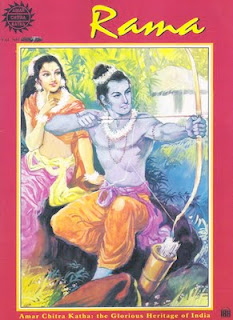“Chacha chaudhary ka dimag computer se bhi tez chalta hai”- This highly renowned and memorable quote from the greately celeberated pages of the acclaimed Indian comic book character still rings fresh in the minds of the Indian comic lovers. Though, sort of juvenile it might have been, but you bet no one would disagree to the fact that the adventures (or misadventures) of Chacha Chaudhary and many more such characters would bring a smile to many a forlorn faces. Kids would eagerly wait for the summer holidays to start just to submerge themselves in the world of these uninhibited clowns. Even the adults, would secretly enjoy skimming through these comics, in the dim light of a chugging train, (though they would never agree to it, and would probably ‘hush-hush’ their children for wasting their time in such ‘deplorable’ stuff!).Even so, one can be certain that every time you go through any of these stuff even today , what with all the digitized versions making hay, it still opens up a barrage of memories for the ardent Indian comic-book lover. The joy and frolic associated with these comics might have diminished over the years, but the charm that it had would never ever die and perhaps it is time to actually look back at the progression of the Indian comics over the years, the reasons for its decline and any future hope that might salvage its sagging fortunes.
Though all at sea in its initial years, the Indian comics underwent significant evolution from the adoptions of the Ramayana and Mahabharata of the 1960s, to informative comics for children, caricatures in print media and adoptions of American superheroes.
Now what Walt Disney is for world animation; Pran is for Indian comics. He first created comical characters like Chacha Chaudhary, Billoo, and Pinki in the 1970s, never having an iota of idea on what proportions his characters would take in the coming years. Then there is Chandama, the comic magazine of the heydays, and a very popular one at that. Since independence, it is being published in more than five languages and still manages to enthrall many a young mind. The quirky stories of ‘Vikram and Betal’ brought quite a bit of reputation for the magazine...
The halfway phase of its development is quintessential. Anant Pai, the pragmatic editor of the Indian Book House, changed the trend of the Indian comics as a whole after founding the series ‘AMAR CHITRA KATHA’ in 1967.They endeavoured to aware the children about their rich heritage. Axioms of religious texts, the stories of martyrs and several legendary and historical personas thrive in the several books. The first book in the series was ‘Krishna’ , followed by the Ramayana and the Mahabharata. The compilation today enumerates to 426 volumes. This grand success galvanized other publishing houses like Dreamland Publications and Diamond comics at New Delhi and Jaico Publishing house at Mumbai to launch new themes.
The start of the 80s saw another prodigious development, as the first Indian comics for children were launched. It was named ‘TINKLE’ and within a short span of time it became quite famous. Treading a bit on the steps of Amar Chitra Katha, Tinkle branched out to various educational themes including science, contemporary culture etc...It brought into the foray a host of unforgettable characters like funny Suppandi, Mooshik the adorable mouse, Shikari Shambhu, Kalia the witty crow and the foolishly wicked Tantri.Their escapades are still well relinquished by one and all. Another well known publishing house of Indian comics is Raj comics, producing famous characters such as Nagraaj the Hindu hero, Doga, Super commando Dhruv, Parmanu and others.
Cartoon strips for print media and comic books flourished, especially in West Bengal. Pratulchandra Lahiri produced two strips for the Jugantar newspaper Bengali and for the Amrit bazaar Patrika in English.Narayan Debnath had gifted the country with his distinctive creations, ‘Nonte Phonte’ and ‘Honda Bhonda’ is still in circulation and has spawned animation films. Another of his creations ‘Batul the great’ is one India’s earliest superheroes as it was conceived during the 60s.
Indian comics has come a long way since then. In recent years though, the sale of the regular comics had dropped quite low. The sagging fortunes got a major upheaval with the launching of the Virgin comics by Gotham comics of India in collaboration with a foreign company. They are specialized in producing special series of Indian comics in collaboration with a foreign company.
They are specialized in producing special series of Indian comics in Indian mythology and Indian history.’ Devi’ and other science- fiction adaptations of Ramayana and others are on the way.
In the current era of computers and the internet, Indian comics will have to adapt to the advancing technology. Web comics is thus in vogue. This format is expected to expand due to ICT (Information and communication Technology) literacy, large number of white – collar workers and internet penetration in India. Web comics afford an outlet for artists who do not wish to distribute via published media.
One hopes that the future of Indian comics chugs along, with the blend of the new and the spice of the old, with dollops of classicism and trendiness poured into it to make it a profound package. Almost insatiable!!



No comments:
Post a Comment